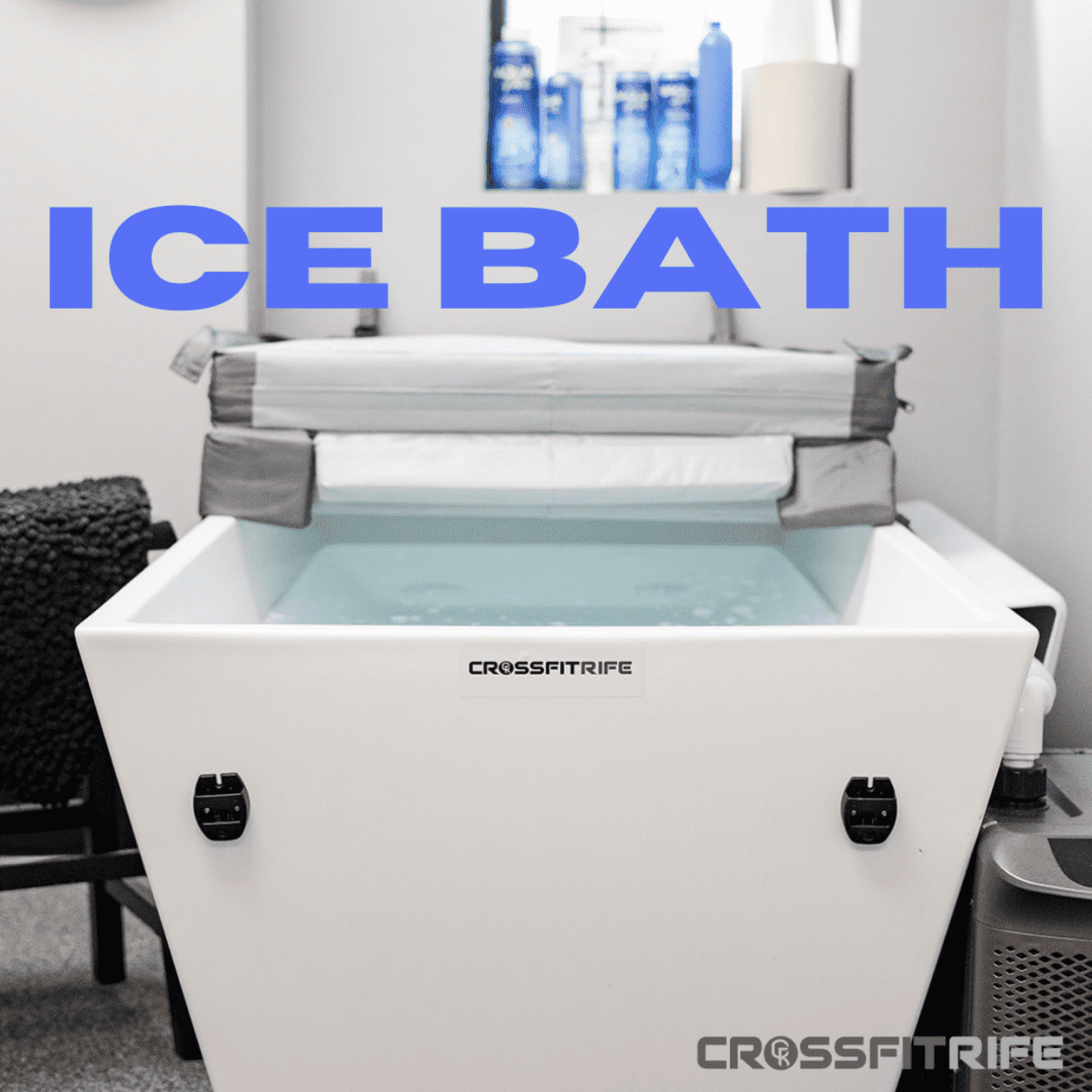Welcome to CrossFit Rife! As a fitness trainer, our job means always exploring ways to help our clients achieve their health and wellness goals. That’s why we invest in recovery protocols such as cold therapy.
Ice baths aren’t new
Cold therapy has been used for centuries to promote health and healing. In fact, the oldest known medical text, the Edwin Smith Papyrus (3500 BC), mentions cold therapy multiple times. Despite its long history, cold therapy has only recently been embraced by modern medicine as a way to prevent and mitigate various types of neurologic injury.
However, the numerous benefits of cold therapy are still relatively unknown and underutilized. In this blog post, we’ll take a closer look at how cold exposure can optimize health and performance. Now, let’s dive into the benefits of cold therapy:
- Boosts fat burning: Cold exposure increases the activity of brown fat tissue, which burns calories and uses energy. In fact, studies show that cold exposure increases calorie expenditure and may be an effective and affordable way to address the obesity epidemic
- Reduces inflammation: Cold exposure has been shown to reduce inflammation and swelling, as it stimulates the production of adiponectin, a protein that combats inflammation. Cold therapy has also been linked to improved pain and range of motion in people with rheumatoid arthritis and ankylosing spondylitis.
- May support longevity: Cold exposure has been linked to increased lifespan in various animals, including flies, worms, fish, and mice. It’s believed that cold therapy may promote longevity through hormesis (the paradoxical adaptation that makes animals stronger and more efficient when exposed to environmental stress) or by slowing down the rate of metabolic processes.
- Improves sleep: Cold exposure has been shown to improve sleep quality, as it promotes the release of melatonin, a hormone that regulates sleep. Cold temperatures can also help to reduce the body’s core temperature, which is necessary for sleep.
- Increases focus: Cold exposure has been linked to increased mental clarity and focus. This may be due to the increased production of noradrenaline, a neurotransmitter that plays a role in attention and alertness.
- Boosts the immune system: Cold exposure has been shown to improve the immune system, as it stimulates the production of white blood cells and antibodies. In one study, followers of the Wim Hof Method (a cold therapy protocol) had a stronger immune response and fewer symptoms of illness when exposed to a pathogen.
- Increases resilience: Cold exposure can help to increase resilience, as it promotes hormesis (the paradoxical adaptation that makes animals stronger and more efficient when exposed to environmental stress). Cold therapy may also help to reduce the risk of injury and improve recovery time.
Neurological benefits of cold water exposure
Cognitive function as we age is becoming an increasingly studied areas as we begin to see the correlation between health and wellness behaviors and their link to cognitive health as we age. For instance, sleep or lack of sleep, has very strong correlation to Alzheimer’s and dementia. There is some evidence to suggest that cold water exposure may have neurological benefits. Exposure to cold water has been shown to activate the sympathetic nervous system, leading to increased production of norepinephrine, which can enhance cognitive function and mood.
One study found that cold water immersion (CWI) increased the levels of norepinephrine in the brain, which was associated with improvements in mood, alertness, and attention. Another study found that CWI improved cognitive performance in healthy adults, including increased attention and working memory.
In addition, cold water exposure may also have neuroprotective effects. Animal studies have suggested that cold water immersion may improve recovery after a stroke, possibly by reducing inflammation and oxidative stress in the brain.
Other benefits of cold plunge
Cold therapy can offer numerous health benefits, including fat burning, reduced inflammation, improved sleep, increased focus, a stronger immune system, and increased resilience. However, it’s important to start slowly and listen to your body, and to consult with a healthcare professional before starting any new health or wellness program.
I hope this blog post has provided you with a better understanding of the benefits of cold therapy and how it can be incorporated into your fitness routine. As always, our team at CrossFit Rife is here to support you on your health and wellness journey. So, if you’re ready to try cold therapy and see the benefits for yourself, be sure to give it a try!






